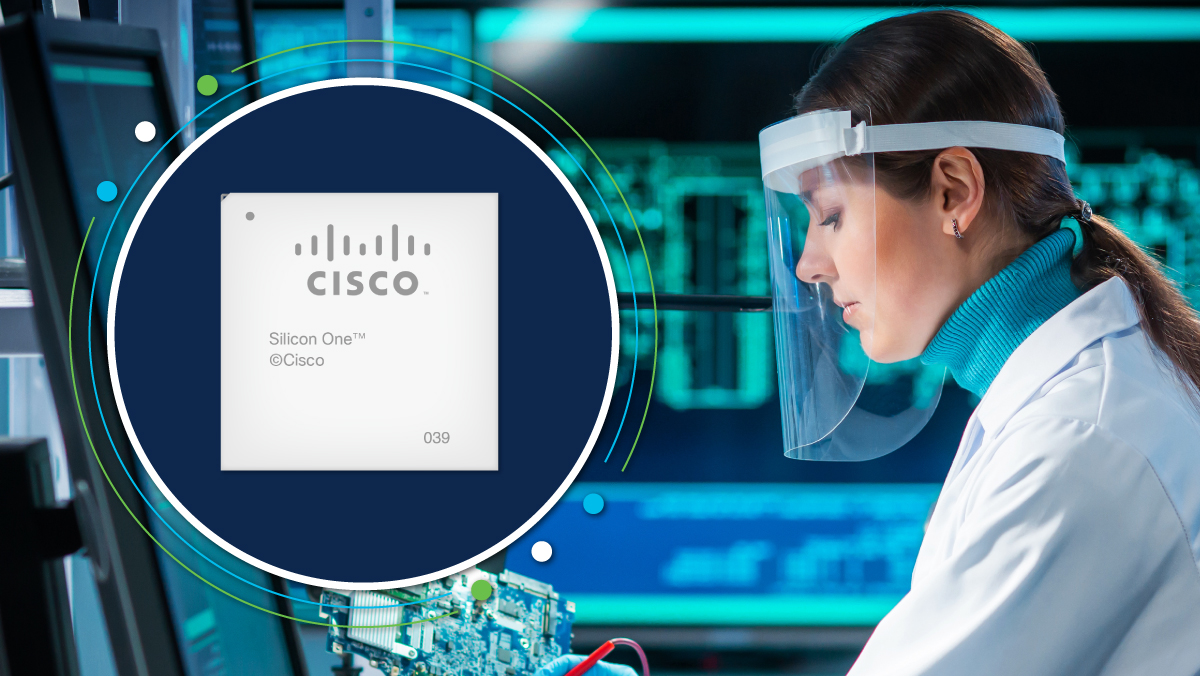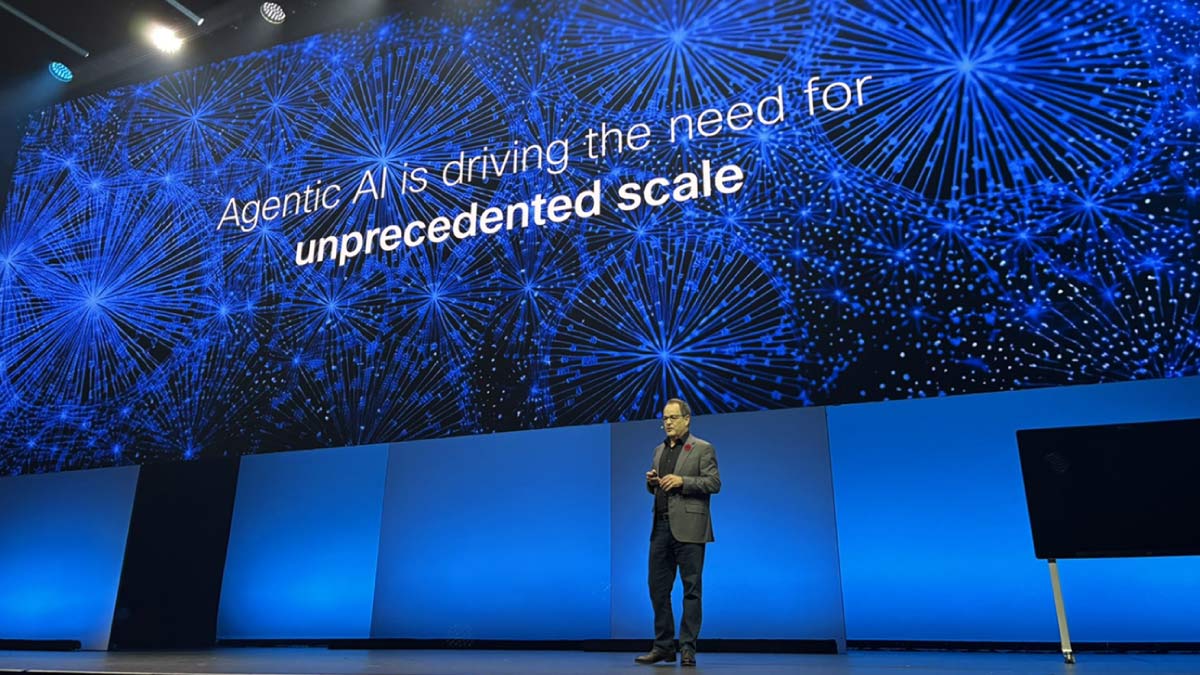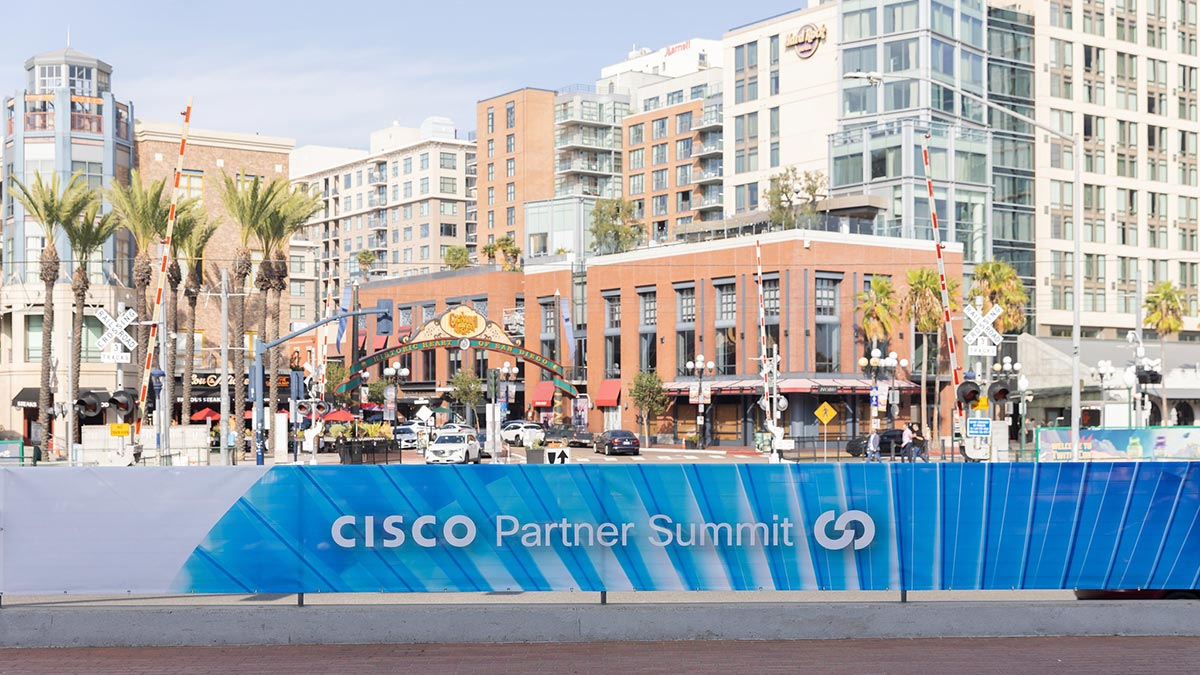Large organizations sometimes respond to disruptions with the agility of an ocean liner avoiding an iceberg. But even global companies can remain highly innovative and responsive to fast-changing customer needs.
With attributes like a highly creative, “fail-fast” culture, bold investments in R&D and innovation centers, and a smart, focused acquisition strategy, Cisco is one such company.
We spoke with a number of Cisco leaders and an external analyst to explore what makes a large enterprise nimble and innovative.
“There are challenges like we’ve never seen before; it’s completely unpredictable,” said Oliver Tuszik, Cisco’s senior vice president for partner sales. “But if there’s one thing we learned at Cisco, we are very good in adapting. We are very fast. We are agile. Of course, we can always get better, but for this size of a company, it's amazing."
The key to the future: R&D
In fast-changing business and tech environments, standing still is akin to death. So, keeping a relentless focus on innovation to meet future demands is critical. That’s where research and development come in. Innovation depends on constant experimentation and deep insights into what is needed in society and business — and what is possible, even if it seems nearly impossible.
Cisco’s network of innovation centers, which spans 11 cities around the globe, spurs out-of-the-box thinking and co-innovation across far-flung regions. But it is but one area in which the company invests in new ideas.
“We invest very heavily in innovation,” said Scott Herren, Cisco’s executive vice president and chief financial officer. “There’s different types of innovation. But let’s stick with product innovation for a moment. We spend about $17 billion a year in total OPEX. R&D is one of the biggest drivers of that. That’s going into substantial innovation.”
Herren cited the groundbreaking Silicon One chip, as one example of intensive R&D investments in action, with its great advancements in speed, flexibility, and energy savings.
“Silicon One is our own chip set that is driving significantly faster throughput,” Herren said. “It combines what previously had been multiple chips into a single chip set. That chip set is not only faster throughout, but designed for substantially less power consumption. So, it’s more competitive. Customers look at not just what’s the acquisition price, but what’s it going cost to run this after three, four or five years.”
A close eye on customer needs
Understanding those ever-changing customer needs, Tuszik stressed, stems from close relationships across a vast, global partner ecosystem. Cisco’s partners represent a vast array of industries and offer their own innovative ideas, while providing a close eye on ever-changing customer demands — for technology that’s more powerful but simpler to implement and manage; products that support customers’ own sustainability goals, and for integrated security that’s built in from the earliest design stages.
“Together with our extended partner network, we are even more agile, even more adaptable,” said Tuszik. “We need our partners, because they can be more innovative in certain segments. They can serve special, vertical needs. They can serve local needs. So, when we are talking about innovation together with our partners, we are able to serve all the areas of innovation from technology over to go-to-market motion, to consumption motion and to adapting to the needs that our customers have right now.”
Jonathan Davidson, executive vice president and general manager of the Cisco networking team, concurs. He sees innovation as an outside-in, customer-driven proposition.
“Make sure you’ve got clear objectives,” he explained, “and start from the outside in, with our customers’ biggest challenges. How can we go and help them solve those greatest challenges in an innovative way? And then organize to do that in the most rapid fashion.”
Lifelong learners
Will Townsend, vice president and principal analyst, Networking and Security at Moor Insights and Strategy, stressed Cisco’s emphasis on constant upskilling — both from within the company and beyond, by creating new opportunities around the world.
“I’m impressed with the investment that the company continues to make in upskilling, in training, and certification,” Townsend said. “It’s your investment in Networking Academy, your investment in DevNet for the developer community that really sets you apart. Obviously, you’ve been the gold standard with respect to engineering certifications.”
Fran Katsoudas, Cisco’s executive vice president and chief people, policy, and purpose office, cites that devotion to constant evolution, change, and professional growth as a key element of an innovative culture — but admits it’s not without its challenges.
“It’s going to be so important to understand today, what are the skills that we have and against the backdrop of what we want to do, what are the skills that we need to build?” she said. “And the magic comes in really helping people connect to the training, to the experiences, to making the time to really focus on that. I think one of the biggest changes is that we’re all going to be constantly learning and relearning. Sometimes I see that people are nervous about how roles are changing, and what I think we have to do is really leap into it.”
Getting acquisitions right
With highly successful acquisitions like Meraki, ThousandEyes, and AppDynamics, to name but a few, Cisco has been adept at absorbing innovative startups without undermining the qualities that made them successful in the first place. The goal is always to create a win-win: Cisco influences and scales the startups as they, in turn, impact the larger company.
Will Townsend highlights how Meraki’s simpler-to-operate, cloud-based networking technologies have impacted the design of Cisco’s flagship Catalyst switches and routers.
“One of the core reasons why Cisco acquired Meraki,” he said, “was the cloud native architecture and the cloud-management capabilities. Catalyst was strictly on premise. But now Meraki has infused itself into the core Cisco portfolio.”
The flip side is Cisco’s influence on Meraki. For example, Meraki products are beginning to feature Cisco’s powerful, energy-saving Silicon One chip, which until recently was found only in mass-scale infrastructure products. It’s a great example of home-grown Cisco innovation that’s having an impact on capabilities and sustainability around the world.
Protecting the Mojo
Acquisitions are sometimes likened to Star Trek’s Borg Collective, a massive alien entity that absorbs entire planetary cultures while destroying their identities. But Townsend applauds Cisco’s merger of cultures, which encourages the smaller companies to maintain their unique identities.
“With your acquisition of ThousandEyes,” he explained, “you’ve allowed that team to continue to innovate. It’s brought internet visibility to the Cisco portfolio, and it’s been integrated into the Cisco portfolio quite effectively. Cisco hasn’t done anything to, to quote Austin Powers, ‘kill the mojo’. You’ve allowed them to innovate in their own way.”
Mohit Lad, senior vice president and general manager of Cisco Networking Assurance, is co-founder of ThousandEyes, which is a highly innovative leader in cloud and internet intelligence – delivering visibility beyond the on-prem environment. He believes that his company has been able to retain and scale innovation even more since it was acquired in 2020.
“ThousandEyes head count has doubled in size since the acquisition and a lot of that growth is based on talent joining from Cisco. When an acquired company continues to innovate, it is actually a great thing,” Lad said. “And it is very rare in the industry. It is something intentional by Cisco, which means Cisco is also innovating because they are empowering an acquisition to thrive, even more than before.”
“The fact that Meraki is innovating 10 years after the acquisition,” he added, “it’s Cisco innovating.”
Ronak Desai became SVP and GM for AppDynamics and full-stack observability, following Cisco’s acquisition of AppDynamics in 2017. He too applauds Cisco’s ability to help startups scale their businesses, while supporting their agile, innovative cultures.
“We got a big lift because of Cisco’s customer reach,” he said. “And their fantastic sales team helped us scale the business. Part of the greatness with Cisco is it’s so easy to preserve the good things about your culture from a startup perspective. Because Cisco thinks like a startup, and it cares about its people.”
Lad also cites a solid cultural alignment with Cisco, along with access to Cisco innovations in areas like predictive analytics and SD-WAN.
“Cisco opened up the operating system,” Lad said, “and with the next-generation technology they were using, enabled us to seamlessly deploy ThousandEyes in environments that we had not considered before. For us, data is a huge currency, and being able to collect data seamlessly from different parts of the environment was really interesting. So, we started to think about how we could leverage ThousandEyes differently, and along with the things that Cisco was very good at, including SD-WAN environments, etc. We were combining our efforts, with the incubation that happened inside Cisco around this broader umbrella of predictive networks.”
No one said it would be easy
Of course, in an organization of more than 80,000 people, speed and agility does not always come naturally — and challenges persist.
Silos are one issue the company is trying to address. Grace Francisco, VP of developer relations strategy, spoke of the company’s ongoing efforts to integrate technologies and ensure that separate units, especially those that were acquired as startups, function together, in a more holistic manner.
As part of Cisco’s API First strategy, for example, Francisco’s team has pushed for more compatibility among separate products.
“Our first step towards an API first strategy is backwards compatibility for all of our major products,” she said. “That’s a really major step forward in terms of the consistency and quality of what our partners and developers expect from us today. And that is difficult. Because of the way that all of our groups have been treated as silos over the many years. For us to transform as a company, we need to get to much more standardized processes, quality initiatives, and practices.”
Which is to say, there’s little time for self-congratulation. Innovation and speed can never be taken for granted. And as Mohit Lad stressed, fast never seems to be fast enough.
“We’ve continued to innovate,” he said, “but I always believed, even as a startup, it could be moving faster. So that won’t change. I always feel like, hey, couldn’t we be moving faster?”





